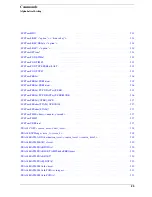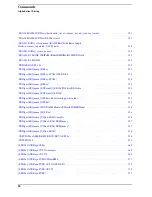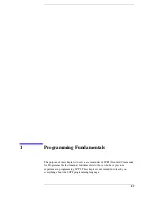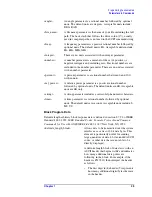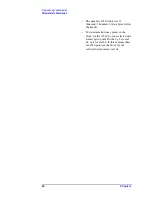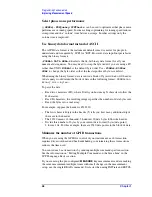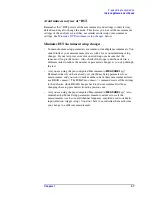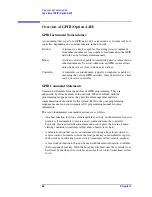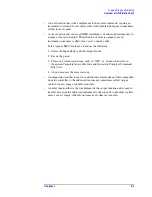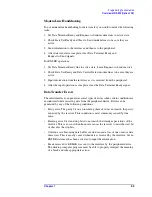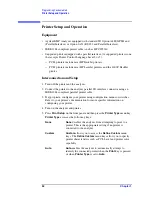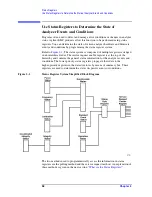
Chapter 1
43
Programming Fundamentals
Parameters in Commands
<angle>
An angle parameter is a rational number followed by optional
units. The default units are degrees. Acceptable units include:
DEG, RAD.
<file_name>
A file name parameter is the name of your file including the full
path. The back slash that follows the drive colon (C:\), usually
used in computer paths, is not used in the SCPI command string.
<freq>
A frequency parameter is a positive rational number followed by
optional units. The default unit is Hz. Acceptable units include:
Hz, kHz, MHz, GHz.
<integer>
There are no units associated with an integer parameter.
<number>
A number parameter is a member of the set of positive or
negative intriguers and including zero. Fractional numbers are
included in the number parameter. There are no units associated
with a number parameter.
<percent>
A percent parameter is a rational number between 0 and 100,
with no units.
<rel_power>
A relative power parameter is a positive rational number
followed by optional units. The default units are dB. Acceptable
units are dB only.
<string>
A string parameter includes a series of alpha numeric characters.
<time>
A time parameter is a rational number followed by optional
units. The default units are seconds. Acceptable units include: S,
MS, US.
Block Program Data
Definite length arbitrary block response data is defined in section 8.7.9.2 of IEEE
Standard 488.2-1992,
IEEE Standard Codes, Formats, Protocols and Common
Commands for Use with ANSI/IEEE Std 488.1-1987
. New York, NY, 1992.
<definite_length_block>
Allows data to be transmitted over the system
interface as a series of 8 bit data bytes. This
element is particularly useful for sending
large quantities of data, 8 bit extended ASCII
codes, or other data that are not able to be
directly displayed.
A definite length block of data starts with an
ASCII header that begins with # and indicates
how many additional data points are
following in the block. For example, if the
header is #512320, then interpret the header
as follows:
•
The first digit in the header (5) represents
how many additional digits/bytes there are
in the header.
Содержание E7401A
Страница 36: ...36 Commands Alphabetical Listing ...
Страница 92: ...92 Chapter 2 Status Registers Use Status Registers to Determine the State of Analyzer Events and Conditions ...
Страница 185: ...185 4 Programming Command Cross References ...
Страница 283: ...Chapter 5 283 Language Reference SENSe DETector Subsection Figure 5 4 Auto Rules of Detector Selection ...
Страница 339: ...339 6 Agilent 8590 EMC Analyzers Programming Conversion Guide ...

